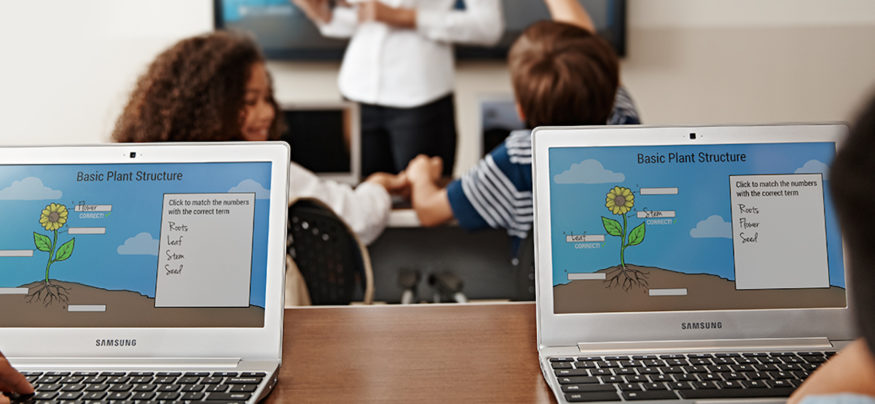While the majority of low-income families have some kind of Internet access in their homes, a new report suggests that the digital divide is still very real. Many of these families are “under-connected,” relying on just a smartphone with a data plan for their online access. This limits the kinds of online experiences that students can have at home, but affordable computers together with mobile Wi-Fi hotspots are helping to level the playing field in many school systems.
Access Limitations
Ninety-four percent of all families in the United States have some kind of Internet access at home, according to “Opportunity for All? Technology and Learning in Lower-Income Families,” a report from the Joan Ganz Cooney Center at Sesame Workshop. Even among families living below the poverty line, 91 percent are connected to the Internet in some way, but 23 percent of families below the median income level, and 33 percent of those living in poverty, rely on mobile-only Internet access. What’s more, “many experience interruptions to their Internet service or constrained access to digital devices,” the report says.
Among families with mobile-only access, nearly three in 10 (29 percent) say they’ve hit the limits on their data plan in the past year. Twenty-four percent say they’ve had their phone service cut off in the past year because they were late on their payments, and 21 percent say too many people share the same phone for them to be able to get the time they need on it.
These figures shed new light on the digital divide, suggesting that the latest break is between families that have computers and traditional broadband access at home and those who rely on just a smartphone for their Internet access. Cost is the main reason for this divide, yet discounted Internet programs that target low-income families are reaching very few, the report says. Among families living in poverty, only seven percent had signed up for such a service, the survey reveals — and the quality of their experience was subpar.
“I had (a discounted Internet plan) because (my children) had assignments that they needed the computer for,” said one parent of a seventh grader in Colorado. “I hated it. It wasn’t working. It was too slow, it would freeze and they couldn’t get anything done. We had it for almost a year. I just got rid of it. I was paying $10 (a month) to not use it.”
Eliminating Disadvantages
Discounted programs intended to help low-income families get online might not be working as planned, but there are some steps that educational technology leaders can take to make sure their students living in under-connected households aren’t at a disadvantage compared to their peers, such as making affordable computers and mobile Wi-Fi hotspots available for students to take home.
For instance, the Green Bay Area Public School District in Wisconsin has launched a pilot program to help students get online from home. In addition to being given school-issued Chromebooks, students in grades 6–12 can take home a mobile Wi-Fi hotspot that provides Internet access to up to 10 devices within a range of up to 100 feet.
Chromebooks are affordable computers that run on Google’s Chrome operating system and deliver applications over the Internet through a thin client model. Thanks largely to their affordability, Chromebooks have exploded in popularity within the past few years and have become the top-selling devices to U.S. schools. With Chromebook options starting in the $200–$300 range, schools can afford to buy more of the devices for the same amount of money, getting affordable computers into the hands of more students.
Why is that important? “Among youth, being under-connected means that critical opportunities to develop creative projects, take advantage of educational media, explore extracurricular programs and complete homework are limited,” the Joan Ganz Cooney Center report concludes. “These limitations can compound over a child’s school years. Unless we make concerted, proactive efforts to reduce digital inequality, these remarkable technological advances will have the unintended consequence of exacerbating differences, rather than diminishing them.”
Read more about low-cost ways to get Chromebooks in the classroom.







